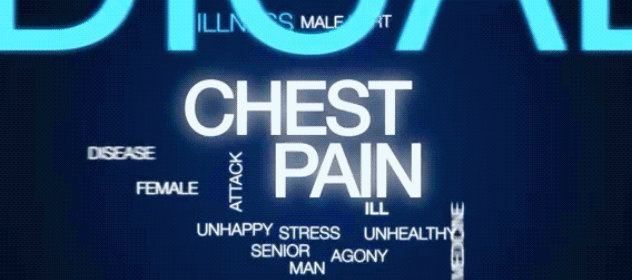Glancing Back, Looking Forward: Lasting Lessons for Years to Come
New guidelines, virtual meetings, negative studies, disrupted research and care: some 2021 moments will leave a lasting mark.

Another year, another wave of COVID-19. Despite having had some more “normal” news days on TCTMD these last 12 months, the pandemic has always been there—dominating the medical journals, pressuring hospital wards and doctors’ offices, and keeping meetings (mostly) online.
I’d like to think we covered all of the top cardiology topics of 2021, but for the second year in a row, summarizing the biggest trials, controversies, and regulatory news of the field feels out-of-step with the real headlines. You can still find my annual retrospective On Record—this time in conversation with our Senior Clinical Editor Mamas Mamas, BMBCh, DPhil (Keele University/Royal Stoke University Hospital, Stoke-on-Trent, England)—and stay tuned for the traditional December edition of the Heart Sounds podcast, where I ask the TCTMD reporters to tell us about their most memorable stories of the year.
Our end-of-year series for 2021, however, embodies what proved to be our approach to cardiology news coverage as the pandemic waxed and waned, then waxed anew. Try as we might to keep our focus on heart disease, there was no aspect of clinical practice, research, or education that returned entirely to normal.
This year I asked each of the TCTMD reporters to think of something that made headlines in 2021 that’s likely to have a lasting impact in the months or years to come, then to grab hold of that thread and pull. These are the stories that evolved from that idea.
US Chest Pain Guidelines Will Change Practice, Though Gaps Remain

More than a month after the release of the long-awaited American College of Cardiology/American Heart Association (ACC/AHA) chest pain guidelines, physicians across the US are mostly happy to see a wide swath of modalities represented that could be used to look for underlying coronary disease, with an emphasis on a patient-centered approach. Beset by delays and internal disagreement, the writing group ultimately pulled together advice that was endorsed by the American Society of Echocardiography (ASE), American College of Chest Physicians (CHEST), Society for Academic Emergency Medicine (SAEM), Society of Cardiovascular Computed Tomography (SCCT), and Society for Cardiovascular Magnetic Resonance (SCMR). The American Society of Nuclear Cardiology (ASNC), which also participated in its development, in the end decided not to endorse the document. TCTMD’s Yael L. Maxwell reached out to a range of physicians to hear what they’ll take from the guidelines and what’s on their wish lists for future iterations.
Home School: Clinical Trials Went Virtual in COVID-19—Are They Here to Stay?

In the early months of the COVID-19 pandemic, clinical trial enrollment slowed to a halt, centers shuttered or heavily curtailed day-to-day contact, patients cancelled study visits, and important follow-up visits involving imaging or functional tests went out the window. Given everything else going on in the world, it’s no surprise that expected event rates built into study designs never materialized. Patients who otherwise would have gone to the hospital or a doctor’s office for symptoms like chest pain or shortness of breath simply stayed home. Very swiftly, clinical trialists had to come up with research protocols that eliminated the need for actual patient contact. Todd Neale’s feature explores the future for these kinds of innovations to leave a lasting impression, and what might be gained and lost.
World-wise: As In-Person Meetings Resume, Global Voices Hope to Be Heard

COVID-19 has indisputably widened preexisting gaps in health and medicine, spanning gender, race, geography, and beyond. But as schisms widen in many parts of the world, some clinicians and researchers have noticed something different, particularly as it relates to opportunities to present their work and engage with international colleagues. Cardiologist Zainab Dakhil, MB ChB, who had the chance to “present” her work virtually at meetings in 2020 and 2021, crunched the numbers and showed, for example, that female presenters and cardiologists from low- and middle-income countries may have had unprecedented opportunities as a result of online and hybrid formats. I reached out to ask cardiologists and meeting organizers around the globe what this might mean for meeting programs and faculty opportunities in the years to come.
As COVID-19 Drags on, the Cardiology Fallout May Haunt for Years

The COVID-19 pandemic upended everyone’s lives first in 2020, then again in 2021, and the cardiology field was no exception: care was delayed, appointments were done at a distance, risk factor control fell by the wayside, and patients faced unprecedented stress, isolation, and lifestyle changes that put their health at risk. An explosion of research is already showing that hypertension rates have risen, blood pressure control levels are down, diets have worsened, and bad habits are on the uptick, while physical activity routines have declined. What’s more, any changes in risk factor control may be compounded by COVID-19’s cardiovascular footprint consisting of myocardial injury, arrhythmias, heart failure, vascular dysfunction, and thromboembolic disease. As one of the cardiologists interviewed by Caitlin Cox for her feature stressed, the need to ensure that patients’ cardiovascular health doesn’t suffer due to the pandemic as it stretches on “is a hugely important topic” and one that will likely “haunt” the profession for years to come.
Cath Lab Teams Find Enduring Lessons in COVID-19’s Unending Reign

For cath lab teams, the COVID-19 pandemic has meant canceled and postponed procedures, sick and burned-out staff members, and the need for innovative and lasting ways of prioritizing safe and efficient patient care while keeping themselves healthy. As yet another wave of COVID-19 hits hospitals worldwide, leaders are starting to take a good, hard look at the kinds of changes made over the last 2 years. In some cases, the pandemic gave clinicians who had been thinking about ways to simplify protocols or pathways a now-or-never excuse to act on those ideas. Telehealth expanded from a wishful-thinking concept to the new normal, while virtual conferencing gave staff a new way to connect. But the pandemic also paved the way for existing knowledge or practices to actually be implemented in ways deemed less pressing in the past—donning and doffing personal protective equipment (PPE), smart triage during a crisis, and looking after the mental health needs of staff. Will all of this lead to a lasting impact on cath labs? TCTMD’s L.A. McKeown set out to find out.
FFR’s Future: Negative Trials Spur Debate Over Technology’s Role

It hasn’t been a great couple of years for fractional flow reserve (FFR), whether it’s being tested in stable patients with multivessel disease undergoing PCI, against traditional coronary angiography in STEMI patients, or in the workup of chest pain patients in the cath lab. The field has seen a spate of negative trials, among them FUTURE, RIPCORD 2, FLOWER-MI, and most recently FAME 3. As a result, some physicians are questioning whether FFR can still play a meaningful role in the management of patients who may need coronary revascularization. Is it time to forego FFR? According to physicians who spoke with TCTMD, the decision to skip FFR may depend on the setting and the purpose for the test.
Shelley Wood was the Editor-in-Chief of TCTMD and the Editorial Director at the Cardiovascular Research Foundation (CRF) from October 2015…
Read Full Bio

Comments